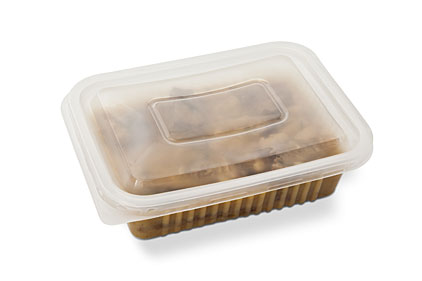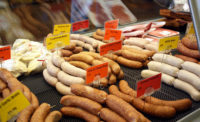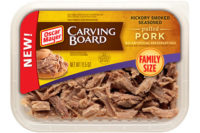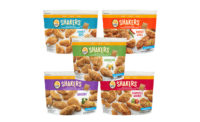Packaging Technology
Reclosable packaging options expand

Reclosability ranks as a popular value-added feature for meat, poultry and seafood packaging.
Benefits include freshness protection and convenience because there’s no need to rewrap remaining portions or transfer them to another container. Reclosable packaging also offers product differentiation, tends to be easy to open and frequently includes a tamper-evident feature. Some designs offer sustainability and production advantages.
“Consumers like whatever works, stores easily and doesn’t overwhelm the product,” explains Mona Doyle, CEO of The Consumer Network, Inc., Philadelphia, and publisher of the Packaging Perspectives Blog.
Fortunately, the array of reclosable packaging options expands constantly. Choices include press-to-close zippers and sliders. The latter operate in a manner similar to zippers on clothing. “Some [consumers] find sliders easier to use than [press-to-close] zippers; others say that slider tabs are too fragile,” Doyle says.
Zippers or sliders often reclose lunchmeat pouches and multi-serving bags of items such as frozen meatballs, chicken breasts or fish fillets. Heavier profiles or multi-track designs enhance the operation of press-to-close zippers, providing the consumer with positive assurance the package is closed. The latest zipper designs offer consumers an even more interactive experience with heightened audible and tactile feedback to indicate successful reclosure. With technology already available in Europe and Asia, the zipper structure can incorporate a product-enhancing or odor-masking fragrance so a scent is released each time the package is opened.
A relatively new press-to-close fastening system for flexible packaging consists of self-mating micro hooks in a construction similar to hook-and-loop closures seen on shoes, jackets and other products. The mating surfaces not only align easily, but also form a secure bond. High-density polyethylene material is supplied in strip or rollstock form to simplify integration into the packaging process on horizontal form-fill-seal (FFS) machines, vertical FFS machines or pouch machines.
Other reclosure options seen for protein products include pressure-sensitive structures that peel and reseal, clamshells, tubs and bowls. Peelable/resealable pressure-sensitive, adhesive-based windows or labels reseal lidstock on trays and can be incorporated into flexible packaging like pouches or bags. Peelable/resealable structures can be compatible with vacuum packaging as well as high-pressure processing, and seal strengths and tack levels can be tailored to fit anticipated usage patterns. As a result, today’s more robust structures not only enhance seal quality, but also increase the number of times the package can be opened and effectively resealed. In some cases, minimum order quantities can be lower, and turnaround can be quicker than for some other reclosure options.
Clamshells, tubs and bowls generally sport friction-fit lids, but a design with a threaded closure has been adopted by Grilstad AS, Ranheim, Norway, for three types of sliced salami. It orients the in-mold-labeled tub upside down so the closure can double as a serving platform.
Tubs and bowls typically hold pouches of ready-to-eat lunch meat and often are saved by consumers to be reused to hold leftovers or products transferred from non-reclosable packaging. Clamshells are favored for prepared foods such as fried chicken or slabs of ribs, popcorn shrimp or crab legs and often are made of polypropylene, which not only provides a “living hinge,” but also is microwaveable and dishwasher safe. On the downside, clamshells can be difficult to open, especially the first time. In fact, Doyle says she’s received complaints about clamshells. Summarizing, she says, “Clamshells bother sensitive fingertips and are seen by some as sources of nicks that have replaced paper cuts.”
Looking for a reprint of this article?
From high-res PDFs to custom plaques, order your copy today!









